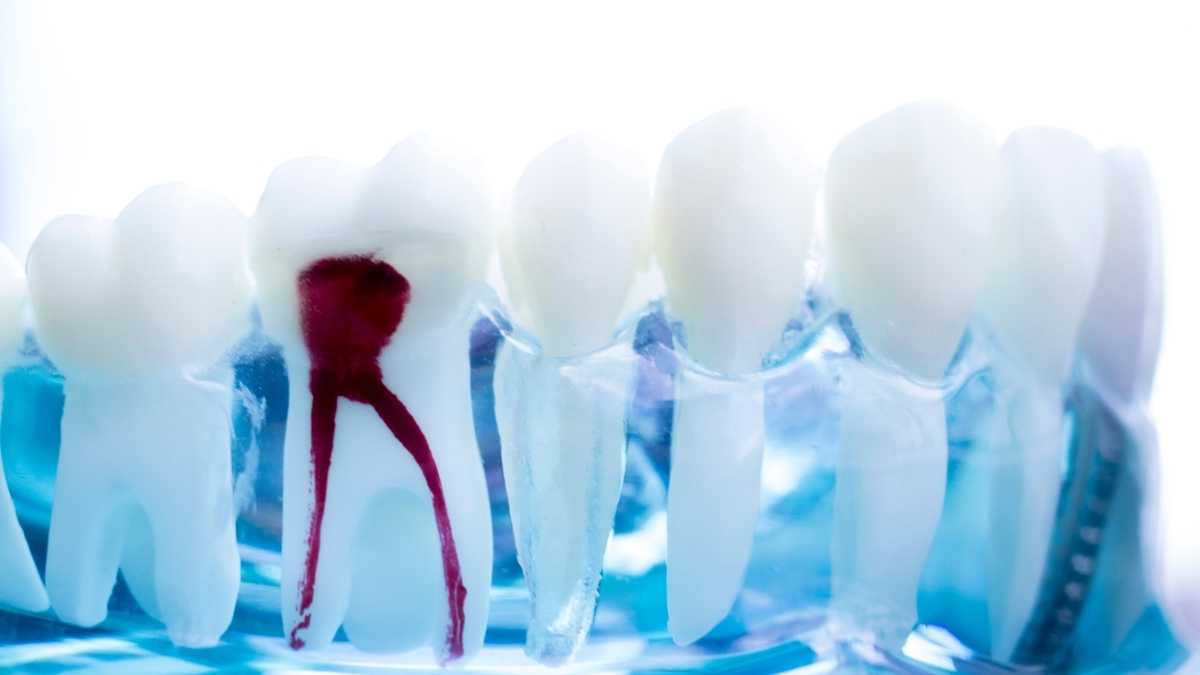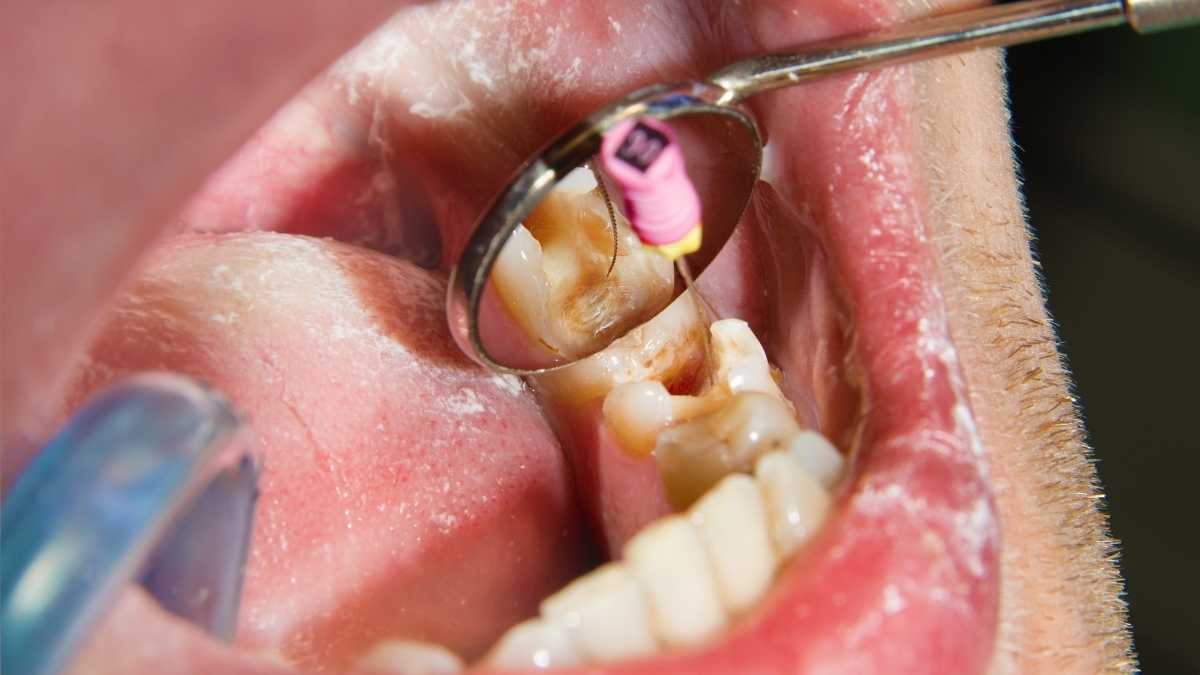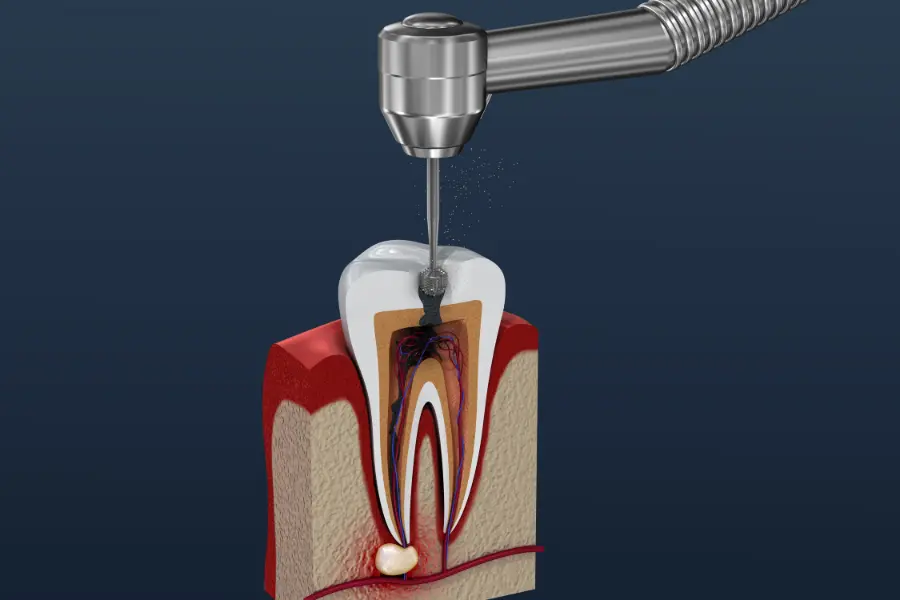In present days, many patients quite often visit their dentists for re root canal. But why? They have already done a root canal once. Why re root canal is a must for many patients nowadays. Let’s discuss it today.
However, doctors take an X-ray before deciding whether re root canal is necessary or not. When a patient goes through root canal treatment for the very first time, he or she becomes confident after the treatment. That his or her teeth are fine and safe.
Everything is perfectly alright with their teeth. And the tooth that has gone through root canal treatment will serve for a long time. But this is not at all the case. Those who come for a re root canal must have got a faulty root canal treatment earlier.
But the filling of the root canal can be inappropriate. Then an inflammatory focus appears on the root of the tooth, possibly even a cyst – this problem must be solved. But before that, some of you may not know much about the root canal itself. So, let’s discuss that first and then we will proceed to re root canal.
Root canal treatment
Endodontic treatments definitely don’t rank among the most popular dental procedures – most of which aren’t very popular to begin with.
Root canal treatment is not very popular because of the fear of heavy pain. Moreover, it is not a pleasant idea to open your tooth and damage the nerve beneath it.
After undergoing the actual procedure, a clear majority of patients will find, that their fears were either unjustified or overblown. But what really sticks around in people’s minds are the few reports of agony and pain.

Nowadays, some question the very reasoning and safety of Root Canal Treatments. Concerns were initially raised by a small group within the dental profession, which is propagating an approach named “holistic” dentistry.
Root canal treatment (endodontic treatment) includes:
- pulp removal
- cleaning of root canals from bacteria
- channel formation
- canal filling
Treatment procedures of endodontic treatment
Modern root canal treatment is very different from treatment in the past. Today this complex process includes:
- cleaning of root canals with hand and machine instruments capable of treating even the narrowest or curved canal
- rinsing canals with special antiseptic agents that penetrate the entire root canal system
- if necessary, temporary filling of root canals with special preparations in order to enhance the anti-inflammatory effect
- dense, airtight filling with permanent material, which excludes re-infection
At the last stage of treatment, doctors restore the structure, function and appearance of the tooth in several ways (depending on the degree of destruction of the upper part of the tooth):
- or using filling material (restoration)
- or with a crown
So, we hope that, now you guys have a clear idea on root canal treatment. Now, let’s move towards our main discussion. In the following section, we will discuss on re root canal or root canal re-treatment.
You can also check out: Can you drink coffee after tooth extraction?
Re root canal [Root canal re-treatment/ Repeated endodontic treatment]
According to the research of WHO, the proportion of successful results of repeated endodontic treatment (re root canal) is 85%.
When carrying out this type of treatment, the dentist-therapist faces significant problems. So, before starting the re root canal procedure doctors should reduce these issues. That will also improve the healing process of the tooth.
Fortunately, modern diagnostic methods, instruments, and equipment enable us to properly clean, disinfect and seal the root canal system after a failed initial treatment.
The presence of an inflammatory process in the bone tissue, a decrease in immunity, and concomitant diseases in a patient are factors that reduce the proportion of successful results.
In the absence of the above, the success rate for both primary and re-endodontic treatment is 82-85%. Thus, it is obvious that repeated endodontic treatment ensures the healing of pathological foci in the bone tissue in the area of the affected teeth. It allows preserving the patient’s natural teeth.

Although the alternative treatment option with implant placement is an effective method of replacing lost teeth. The primary task of dentists remains to preserve as many of our patient’s natural teeth as possible.
Endodontic diseases of dental patients that develop after the primary treatment are the result of the presence of bacteria in the root canals and the body’s response to them.
These bacteria are the most significant causative factor of such diseases:
- they end up in the root canals of endodontically treated teeth due to poor cleaning and filling,
- iatrogenic problems,
- failure of restorations,
- as well as poor oral care by the patient himself.
The elimination of bacteria from root canals is the main goal of re-intervention. The microorganisms that inhabit the root canal system are highly resistant to methods of their destruction.
They can hide and survive in branches, bends of root canals, as well as in dentinal tubules (structures of dental hard tissues), binding with the collagen of these hard tissues.
The bacteria present in the canals in the case of the primary infection are markedly different from the bacteria that infect a previously endodontically treated tooth. This microflora has a polymicrobial character and consists of different numbers of gram-positive and gram-negative bacteria, fungi – many of these microorganisms are able to survive in adverse environments and are resistant to various methods of treatment.
Root canal infection can result from both incomplete cleaning and subsequent penetration of bacteria as a result of poor sealing (obturation).
Failure of restorations is a common cause of endodontic disease after initial treatment. Postponement of the final restoration at a later date may create conditions for the penetration of bacteria into the root canal system due to coronal microleakage. Poor sealing of the edges of the artificial crown can also cause root canal infections.
Another source of bacterial infection is caries. Damage to the tooth structure as a result of trauma, the formation of a crack or fracture can create the prerequisites for the penetration of bacteria into the root canals. In addition, our patients are responsible for their oral hygiene and must adhere to effective hygiene practices.
Considering all of the above, methods of repeated endotherapy should be effective in terms of killing bacteria and their nutrient medium. The use of modern endodontic hardware, instrumental and ultrasound methods allows clinicians to detect all existing root canals, which is a guarantee of complete cleansing of the intra-root system.

Endodontic ultrasound tips are extremely effective in removing stump inlays, cement, paste, regular and silver posts from the canal. These instruments allow the dentist to preserve root dentin (internal tissues of the tooth), which is extremely important for the further long-term functioning of the tooth under load, as well as provide excellent visualization, thereby significantly expanding the possibilities of re-treatment.
Causes of Re-Inflammation of Teeth
If you take good care of your teeth, even after endodontic treatment, they will serve you for many years. But it also happens that the question of re-treatment of the tooth arises. The case can be like this: you are having a nice time after your root canal. And it is long since you have visited your dentist. Suddenly inflammation comes and reminds you of your dentist. A tooth may not recover for several reasons:
- During initial treatment, the infection may have remained in narrow and hard-to-reach parts of the canal;
- The root canal may have complex anatomy that the dentist did not notice the first time;
- After the treatment, the tooth was not immediately crowned or restored for any reason;
- There is the contamination of the oral fluid inside of the tooth;
- When caries reappears, the infection has re-entered the tooth;
- There is a crack in the tooth.
What does root canal re-treatment include?
To do re root canal, the doctor will have to remove all previously done restorations. Namely:
- the pins,
- crown and
- the filling itself.
In order to get to the inflamed areas. Re-examination of the canals will be more thorough. The dentist will apply special magnification and lighting for accurate examination.
After repeated cleaning, the doctor will again seal and fill the root canals, place a temporary filling. If the inflammation is in a very narrow canal, you may need a procedure such as endodontic surgery.
The dentists have to make an incision and seal the root apex. After the end of treatment, it is necessary to visit an orthopedic surgeon to restore the functions of the tooth.
Pain-free root canal re-treatment
The latest dental technology makes dental re-treatment a painless procedure. You won’t even feel the dentist’s intervention. Prices for such dental treatment will depend on the complexity of the work. But however you look at this, this process is expensive. So, check out all the options that are
Some FAQ on re root canal
When is re root canal required?
Previously, root canals were mainly filled with medicinal pastes, including resorcinol-formalin, which changed the color of the tooth to pink.
Over time, it turned out that this paste is loose, voids can form in the root canals, and inflammatory foci appear at the root.
There are other types of toothpaste that do not change the color of the tooth, however, over time, the material in the root canal also becomes looser, voids appear, which are a favorable environment for the development of infection, as a result of which inflammatory foci appear.
As soon as a defect in the filling occurs, saliva begins to flow into the canal, which further exacerbates the situation: the infection of the canal accelerates, the infection goes to the bone.
The next method of filling the canals was the method of lateral condensation – filling the root canals with cold gutta-percha.
Together with the healing paste, several gutta-percha cones are inserted into the canal, the cones are pressed against one another and create a dense root filling.
What is considered a quality canal filling?
The canal must be filled up to the root apex. The material on X-ray should look homogeneous, without voids, from beginning to end of the same color, of the same consistency, there should be one radiopacity, the bone around the apex of the tooth should not contain signs of inflammation.
The method of vertical condensation – root canal filling with hot gutta-percha – is modern and at this stage of the development of dentistry the most reliable method of root canal treatment.
Hot gutta-percha is injected into the canal when heated, assuming the internal shape of the canal, repeating its relief.
Hot gutta-percha practically does not shrink, and this is a guarantee that the canal will remain tightly sealed, no voids will appear in it, since the resorption of the healing paste is minimized.
All this leads to the fact that the penetration of any infection into the bone becomes impossible.
The duration and reliability of hot gutta-percha should be noted. This method first came into practice in the year 2002 and still, it has carried out a good journey.
On X-rays, we see that the root filling remains complete, of high quality, there are no inflammatory foci at the root and apex of the tooth, the bone is preserved, the root is preserved, the patient only needs to change the filling or crown in order to recreate the anatomical shape of the tooth.
Why use a microscope for root canal re-treatment?
The resolution of our eye is much less than the resolution of a microscope, and without special magnification it is simply impossible to see the anatomy of the root canal, and, accordingly, to cure it qualitatively.
This is often the need for re-treatment: the doctor during the initial treatment did not use the magnification, did not see all the nuances, did not go through the canal correctly, and did not fill it completely.
Since there were voids in the canal and the paste became loose over time, the infection filled the entire canal and entered the tooth bone.
No doctor can predict the anatomy of a patient’s tooth, as all teeth are very different, even in the same patient.
What are the difficulties and risks associated with re root canal?
Although the initial canal treatment is undoubtedly a complex and extremely demanding process, re-treatment is associated with more significant risks.
A previously treated tooth has already been subjected to mechanical stress, which could unpredictably affect the situation in the tooth.
Therefore, it is doubly difficult for the dentist to perform re-treatment, and the risks with such treatment are quite high, therefore, re-treatment of canals can only be trusted by very experienced endodontists (specialists in the treatment of root canals), re-treatment should be carried out exclusively using a microscope.
Do patients come on their own initiative for re root canal?
For the purpose of re root canals, patients rarely visit the clinic, since this problem usually does not make itself felt and is clarified only after an X-ray.
We tell patients about the risks of teeth with poorly sealed canals, the main of which is the likely loss of a tooth and the need to install an implant.
The patient weighs the money and time costs and makes a decision, basically agreeing to re root canal – after all, preserving his own tooth is always a priority.
It is important to understand that if there is a problem in the root canal, it will never go away on its own.
The infection, which has begun to spread in the canal, absorbs the filling material, then begins to affect the bone and destroy the inner walls of the canal, the tooth weakens from the inside.
Let’s wrap up the discussion for today. We hope now you have a clear idea of re root canal. And, you will be aware of your teeth that have gone through root canal treatment. If you have any further queries please let us know. Stay safe and enjoy a healthy life.







